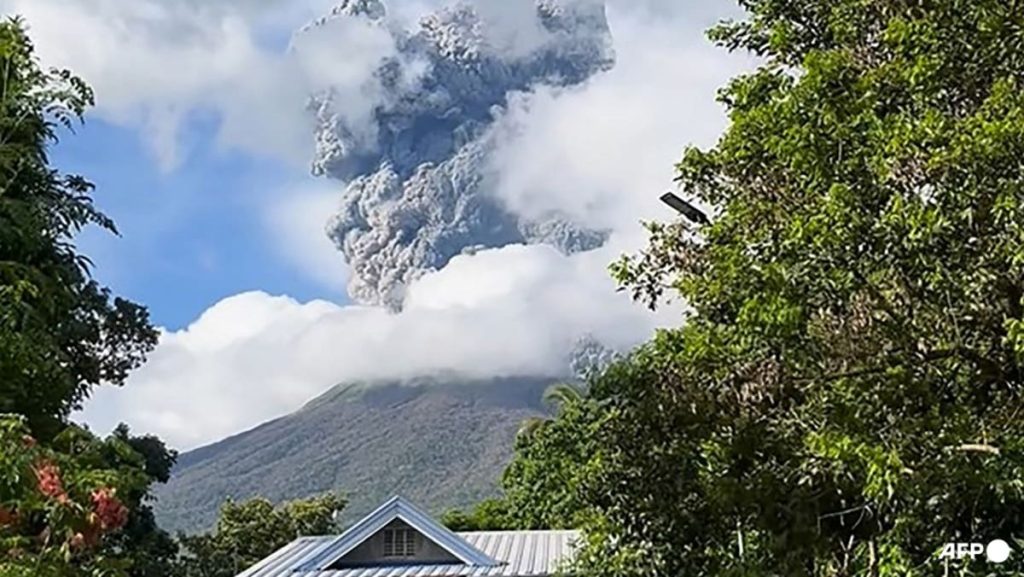Mount Kanlaon, a simmering giant amidst the verdant landscape of the Philippines, has once again stirred from its slumber, prompting evacuations and raising concerns among local authorities and residents. Situated within the volatile Pacific “Ring of Fire,” a zone notorious for its seismic and volcanic activity, Kanlaon is one of two dozen active volcanoes in the Philippines, a nation perpetually grappling with the unpredictable forces of nature. This latest eruption, marked by ashfall affecting nearby communities, underscores the precarious balance between human settlement and the raw power of the Earth’s geological processes. The ongoing situation, while currently manageable, carries the potential for escalation, prompting authorities to prepare for worst-case scenarios involving increased alert levels and expanded evacuations.
The immediate impact of Kanlaon’s reawakening is evident in the response of local government units (LGUs) that have initiated evacuations in areas closest to the volcano. While the exact number of evacuees remains unclear, the potential impact is significant, with an estimated 54,000 individuals residing within the potential danger zone. The ashfall, a tangible manifestation of the volcano’s activity, poses respiratory risks and potential disruption to daily life. The civil defense office, recognizing the gravity of the situation, is proactively preparing for the possibility of a heightened alert level, which would necessitate further evacuations and the implementation of enhanced safety measures. This proactive approach underscores the lessons learned from past volcanic events in the region and the importance of preparedness in mitigating the impact of natural disasters.
The economic implications of Kanlaon’s eruption are also a concern, particularly given the region’s prominence in sugarcane production. Negros Occidental and Negros Oriental, the two provinces most directly affected by the volcanic activity, are major contributors to the Philippines’ sugar industry. Disruptions caused by evacuations, ashfall, and potential further volcanic activity could impact agricultural production and the livelihoods of those dependent on the industry. Moreover, the potential for prolonged disruption presents challenges for local economies and underscores the interconnectedness between natural events and economic stability.
While current air traffic remains unaffected, the civil aviation regulator has issued advisories to pilots, urging them to exercise caution and avoid flying in close proximity to Mount Kanlaon. This precautionary measure aims to minimize the risk posed by volcanic ash, which can damage aircraft engines and pose a significant safety hazard. The ongoing monitoring of the volcano’s activity by the seismology office will continue to inform decisions regarding air travel restrictions and ensure the safety of both passengers and crew. This careful balancing act between maintaining air traffic flow and prioritizing safety highlights the complexity of managing the impact of volcanic eruptions on various sectors.
The history of Mount Kanlaon is rife with eruptive episodes, underscoring the inherent risks associated with living in its shadow. With over 40 recorded eruptions since 1866, the volcano’s volatile nature is well-documented. The tragic incident in 1996, when three hikers lost their lives due to ash ejection, serves as a stark reminder of the potential dangers posed by even seemingly minor eruptions. This historical context reinforces the need for vigilance and preparedness in mitigating the risks associated with volcanic activity. The ongoing monitoring and analysis of Kanlaon’s behavior by seismologists and volcanologists provide crucial information for predicting future eruptions and developing effective safety protocols.
The current eruption of Mount Kanlaon, though still in its early stages, highlights the ongoing challenge of coexisting with active volcanoes. The Philippines, situated within the geologically dynamic Ring of Fire, faces a recurring threat from volcanic and seismic events. The proactive approach taken by local authorities, including the initiation of evacuations and the preparation for potential escalation, reflects a growing understanding of the importance of disaster preparedness and risk mitigation. The ongoing monitoring of the volcano’s activity, coupled with the implementation of safety measures, underscores the commitment to protecting lives and minimizing the impact of this natural phenomenon on the communities that reside in the shadow of Mount Kanlaon. The lessons learned from this eruption and others like it will continue to inform future disaster preparedness strategies and strengthen the resilience of communities facing the ever-present threat of volcanic activity.

